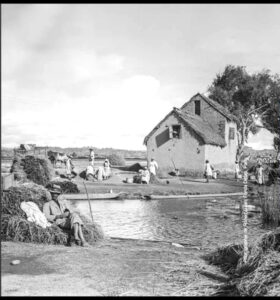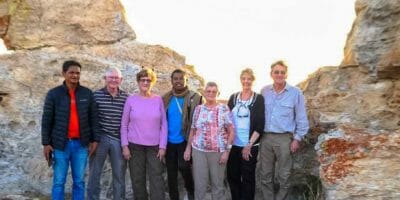
Water, life, purity, object of essential ritual for the Malagasy. However, in the past five years, blue gold has not flowed in the homes of homes. The country is thirsty! While the environmentalists launch perspectives with concern, that technicians try to find sustainable solutions, that journalists and activists are sounding the alarm, the small people, every day, desperately tries to open their oxidized tap hoping to see even one drop. But still no good news! In disadvantaged districts, dusty yellow cans are aligned around the public fountains.
This sad reality challenged the team of the Museum of Photography in Anjohy. In order to subtly awaken the minds of compatriots, she organized a cultural manifestation. Besides, this is its mission. “” Through its actions, the museum aims to strengthen Malagasy young people a feeling of national pride and actively participating in the construction of a collective identity ». On Saturday April 5, from 10 to 6.30 p.m., an open day was held in this noble establishment. This is “an exhibition that explores the essential role of water in the history and culture of the country”. So, the morning, a café-history ” Photographing water, another reading of the image “Was led by historian Helihanta Rajaonarison, in the afternoon a musical tale was presented by the Miangaly company, followed by a visit to the exhibition and stands in the garden around 7 p.m. According to the manager, “ 300 historical photographs and a selection of ancient and contemporary pottery, the exhibition highlights a double face: water is both vital resource and an element full of spirituality. Between memory and imagination, this installation also invites you to reflect on the issues linked to the rarity of water. Among the pieces presented, the Baobab photographic series, a source of life by researcher Cyrille Cornu, illustrates the ingenuity of the Mahafaly in the face of the southern drought. By digging these giants of nature, these people transform them into living tanks, thus ensuring their survival in an arid environment. The ceramic artist Gloria Rabarison also exhibits around twenty pottery, inspired by historical archives. His work puts the land and water in dialogue, celebrating traditional know-how and the Malagasy collective memory ». In addition, the exhibition will be presented for six months, from April to October. The enthusiasts of history and culture will feast on.
ISS HERIDINY











